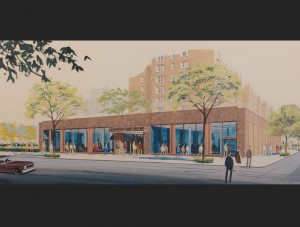Today in Geneva, the Mona Lisa Foundation unveils a younger Mona Lisa whose smile is distinctly happier and less enigmatic than the one the world knows so well. The Swiss consortium that owns the work theorizes the Isleworth Mona Lisa, above, is Leonardo da Vinci’s first attempt at the most famous portrait painted while the sacrosanct version housed at the Louvre in Paris is the same woman painted several years later. As can be expected, the art world is divided as to whether the painting is an authentic Leonardo or whether it is a copy made after the original was executed. Among the historians presenting evidence supporting the theory is Alessandro Vezzosi, director of the Museo Ideale Leonardo da Vinci in Vinci, the artist’s birthplace on the edge of Florence. Weighing in for the more numerous skeptics is Leonardo expert and emeritus professor of art at Oxford University, Martin Kemp: ‘So much is wrong. The dress, the hair and background landscape. This one is also painted on canvas, which Leonardo rarely did.’

Portrait of Mona Lisa (1479-1528), also known as La Gioconda, the wife of Francesco del Giocondo; 1503-06 (150 Kb); Oil on wood, 77 x 53 cm (30 x 20 7/8 in); Musee du Louvre, Paris. Source: ibiblio.org
‘She might look younger,’ says Professor Kemp, ‘but this is probably because the copyist — and I believe it is a copy done a few years after the Mona Lisa — just painted it that way.’ The Isleworth Mona Lisa’s known history dates to 1914 when an art critic named Hugh Blaker from Isleworth, West London bought the painting from a Somerset collection. Blaker, like many after him, was convinced the painting was authentic and spent much of his career attempting to prove it. Among the evidence presented by the Mona Lisa Foundation is a claim of Giorgio Vasari, Leonardo da Vinci’s 16th century biographer, that the Renaissance master started a Mona Lisa in 1503 and “left it unfinished.” Then in 1517, a completed portrait of “a certain Florentine lady”–the Mona Lisa we know today appeared in Leonardo’s collection. Supporters of the dual Mona Lisa theory posit the “unfinished” work and the Isleworth Mona Lisa are one and the same, and the number of intervening years between the two paintings account for the seeming youth of the Isleworth subject. Like many in the art world, we eagerly await the unfolding of supporting evidence and counterarguments as the debate around this ever-mysterious lady deepens.



